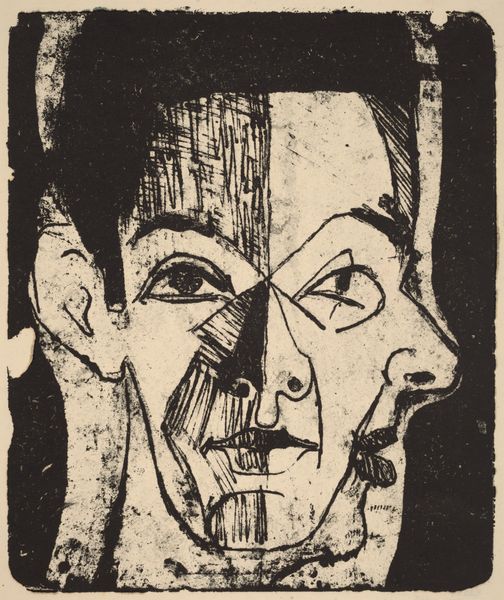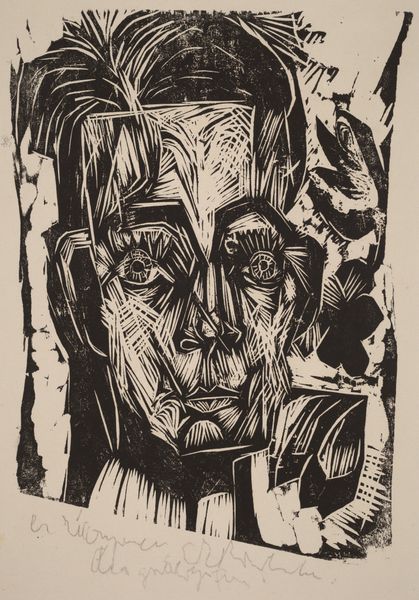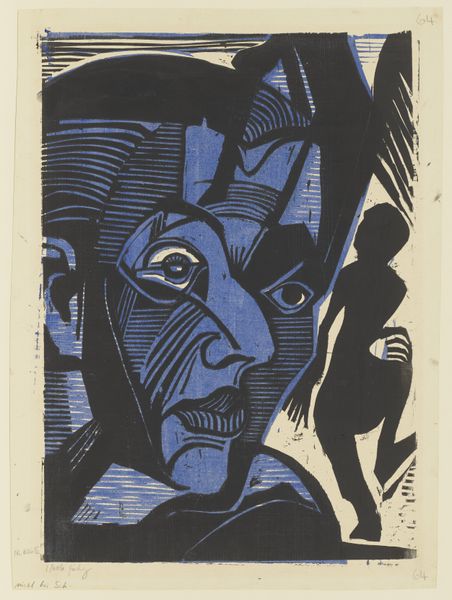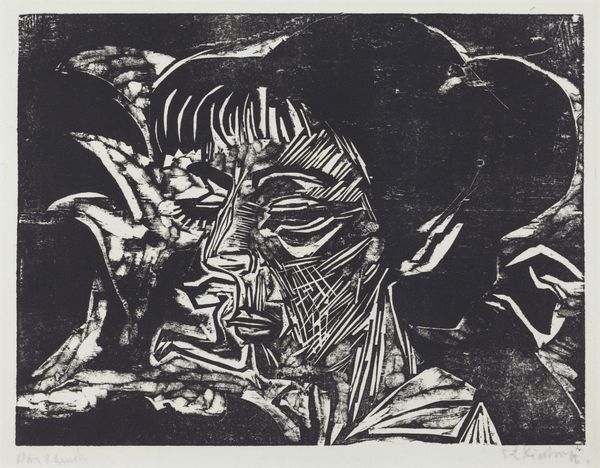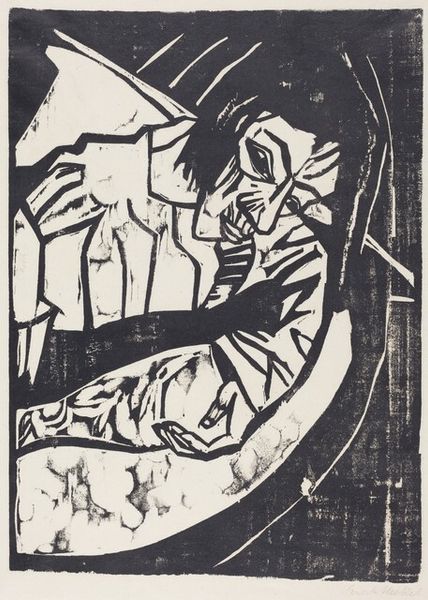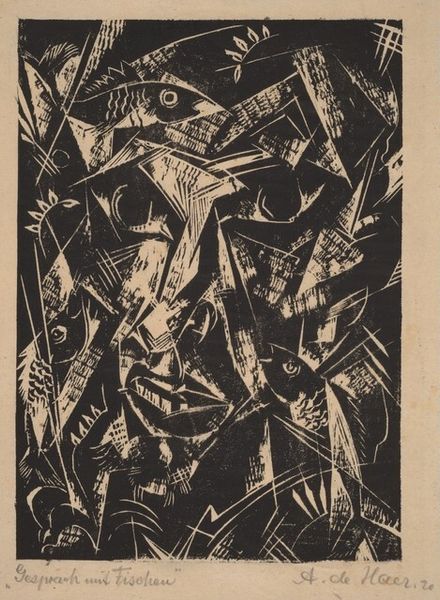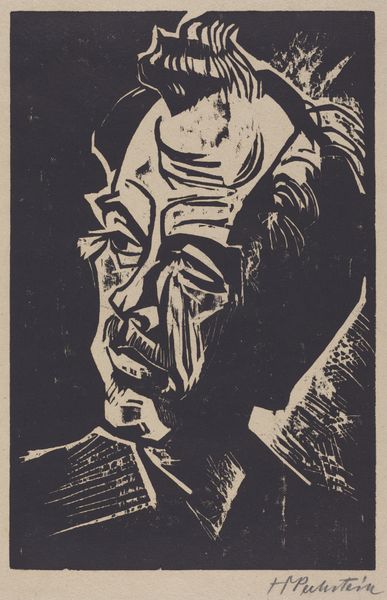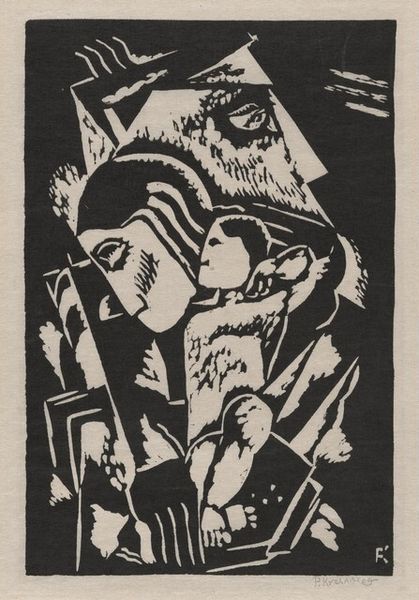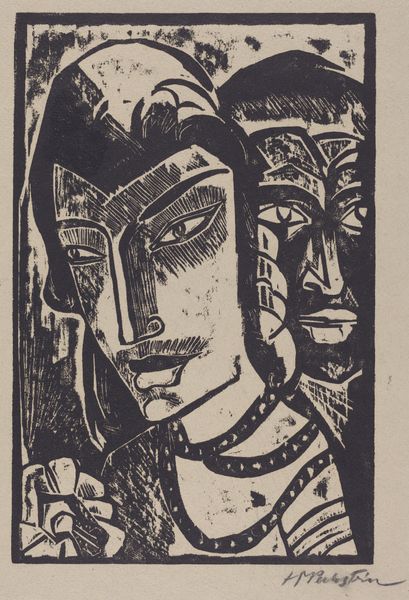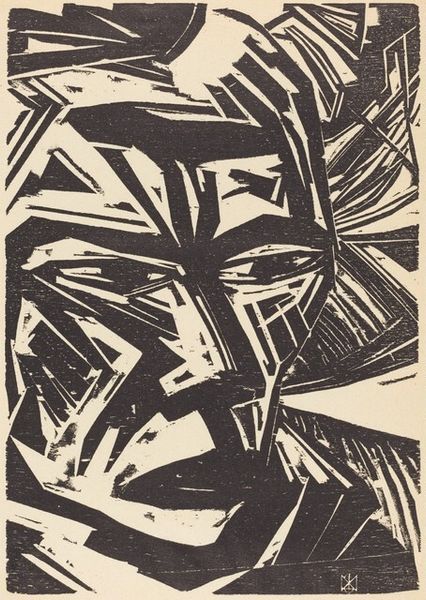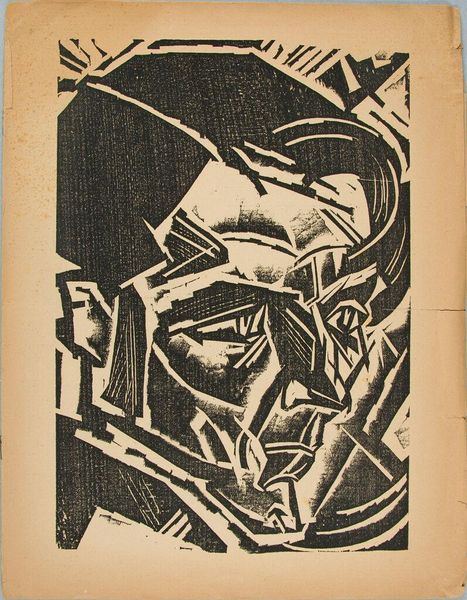
print, woodcut
#
portrait
#
ink drawing
# print
#
german-expressionism
#
figuration
#
woodcut
Dimensions: image: 32 x 23.5 cm (12 5/8 x 9 1/4 in.) sheet: 45.5 x 34 cm (17 15/16 x 13 3/8 in.)
Copyright: National Gallery of Art: CC0 1.0
Editor: Here we have Ernst Ludwig Kirchner's "Woman with a Veil" from 1915. It's a striking woodcut print. I find the contrast so bold; the stark black and white creates an almost unsettling feeling. What do you see in this piece? Curator: Immediately, my eye is drawn to the labour involved. Think about the process: the artist painstakingly carving into wood, a very physical act, especially to achieve such angular forms. Then, consider the wood itself. What kind of wood? Was it locally sourced, adding a layer of geographical context? Editor: That's fascinating! I was so focused on the image itself. I hadn't considered the raw material's impact. Curator: Exactly! And look closer at the veil. Is it truly concealing or is it revealing something about societal expectations around women and visibility in 1915? What’s the relationship between the act of creating and controlling female representation? Editor: So, you’re saying the artistic process and the material chosen are tied to societal commentary? It goes beyond just a portrait then. Curator: Precisely. How does the mass production potential of printmaking play into ideas about consumerism and artistic value? This was printed, it would seem, to be purchased, consumed. Is the artist selling commentary on femininity? Is the artist making the consumer complicit? What did art *cost* at the time? Editor: Wow, I hadn't thought about how the medium connects to those broader ideas. That gives me so much to consider about this piece. Thank you! Curator: And thank you, it's a reminder to constantly re-evaluate the dialogue between creation and consumption in art.
Comments
No comments
Be the first to comment and join the conversation on the ultimate creative platform.

